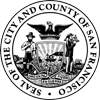Any discussion of public transportation must begin with the automobile. A livable, walkable, human-powered vehicle City can only be possible by removing significant numbers of automobiles from our streets. Cycles, scooters, wheelchairs, and pedestrians (especially children) cannot share the same space as cars, trucks, and busses without numerous horrible accidents. The only logical solution is to design communities for people, not automobiles, from the ground up.
Transportation planning must begin with the fact that most people walk (or should) to most places. This will require converting some streets into "greenswards;" zones where no motor vehicles are allowed. We could begin with Market Street, which is un-drivable anyway. Some streets should be dedicated for human powered vehicles like bicycles, tricycles, and wheelchairs. And MUNI needs to be re-thought and redesigned, from the ground, up to top management.
We need a wide assortment of vehicles designed for different purposes; big roomy comfy express busses that make maybe five or 10 stops, vehicles designed to pickup and discharge wheelchairs, strollers, and other HPV's (human powered vehicles). Hyper-local, roomy shuttles for laundry and shopping trips. You know, public transportation. And of course MUNI should be free to encourage ridership.
And by "free," I mean paid for by those multi-national corporations that have used our infrastructure: over-educated population, perfect weather, among the best food choices and music scene in the world, free public art, Sierra snow-melt drinking water, BART, the GG and Bay Bridges, and of course, our world-class sports franchises, to build their brands. If corporations are people, then they should be more than willing to give back to the community in proportion to how much they have benefitted. And, like persons, if they welch on their obligations, corporations can be knee-capped.
|




